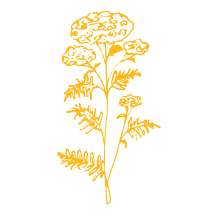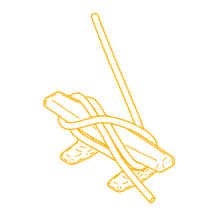
Nancye Hesaltine is a Baltimore-based artist with a daily practice any of us might also pursue.
“Once the pandemic had really settled in with all its stresses, I began drawing a flower a day,” she says. “I draw the lines and shapes I see with a pen, sign and date it, and sometimes add a note about the day.”
So simple—as simple as the King’s Macc Rose drawing shown here, drawn in June.
“With so many hard things happening in the world,” she adds, “this is a calming activity.”
Nancye, who lives with anxiety and depression, has previously turned to art-making as an aid in coping with emotional distress. Several years ago, she made the decision to stop using Klonopin, an especially strong psychotropic drug she had been taking as prescribed for 20 years. Tapering off the medication over a two-year period, Nancye experienced a variety of harrowing withdrawal symptoms. She remained grounded by creating watercolors through it all—examples of which we share below.
“My artwork was a lifeline, a way to feel better as I navigated anxiety and hard physical and mental side effects,” she recalls.
Today, her art is again serving as a balm in what she calls “the upside-down world of COVID-19.”
As we all feel the stress of coronavirus lurking, Nancye’s current art practice offers a model to any of us. That’s especially true here in Boothbay, where we have the Coastal Maine Botanical Gardens, a treasure where for a small price (and for free on certain days) we might find comfort wandering down paths rich with flowers, sketchpad and pen in hand, peace abounding.
Nancye knows firsthand the power of art-making for healing; in our own gardens, we can too.


“My mind wandered like the lines in this painting,” says Nancye of the work on the left from 2019, made while experiencing symptoms related to withdrawal from prescribed medication. She made Return of Memory (right) the year before, after beginning to taper off of Klonopin. Nancye’s art offers a clear example of how beauty might arise from hardship.




